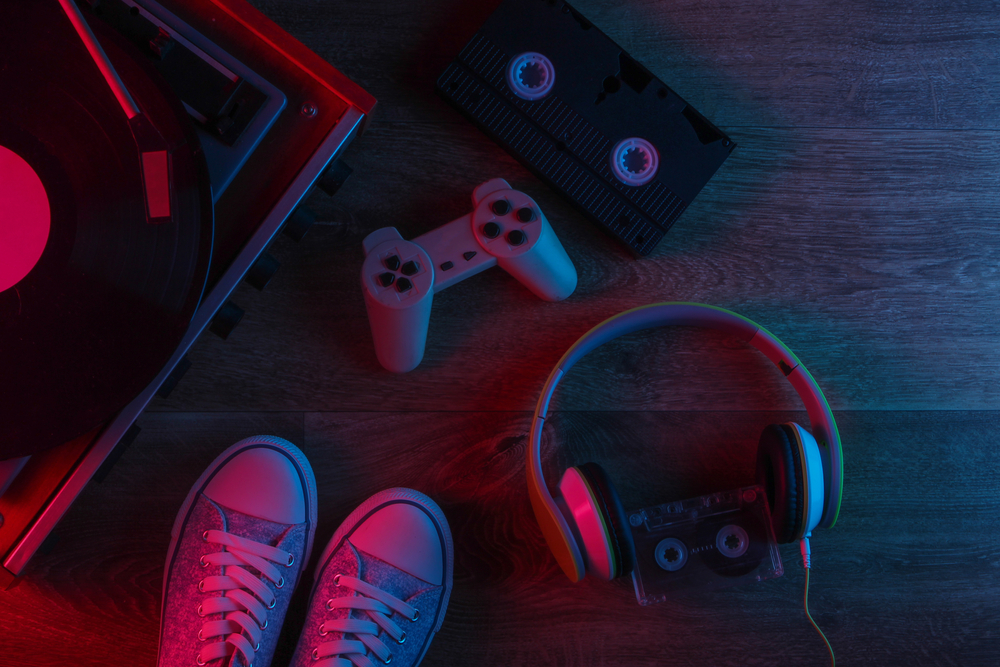Neon Renaissance: The Luminous Revival of 1980s Aesthetics
In a dazzling fusion of nostalgia and innovation, the 1980s aesthetic is experiencing a vibrant resurgence across multiple artistic domains. This neon-infused revival is not merely a throwback but a reimagining of an era's visual language, influencing contemporary fashion, music, visual arts, and digital media. As creators and consumers alike embrace the bold colors, geometric patterns, and synthesized sounds of the decade, we witness a cultural phenomenon that bridges generational gaps and redefines retro-futurism for the 21st century.

Digital Renaissance in the Modern Era
Today’s revival of 1980s aesthetics is intrinsically linked to digital culture. Social media platforms have become virtual galleries for retro-inspired art, with hashtags like #vaporwave and #synthwave garnering millions of posts. Digital artists are using modern tools to recreate and reimagine the look of early computer graphics, resulting in a unique blend of nostalgia and futurism. This digital renaissance has spilled over into web design, user interfaces, and even cryptocurrency aesthetics, creating a visual language that feels both familiar and cutting-edge.
Fashion’s Fluorescent Flashback
The fashion world has wholeheartedly embraced the neon revival, with major designers and fast-fashion brands alike incorporating 1980s-inspired elements into their collections. Oversized silhouettes, acid-wash denim, and neon accents have made a triumphant return to runways and street style. However, this is not a simple recreation of past trends. Contemporary designers are reinterpreting these elements through a modern lens, creating looks that pay homage to the past while feeling decidedly current. This fusion has resulted in a new aesthetic that appeals to both those who lived through the 80s and younger generations discovering the style for the first time.
Sonic Synergy: The Return of Synthesizers
The sound of the 1980s is as distinctive as its visual style, characterized by synthesizers, drum machines, and larger-than-life production. Modern musicians are tapping into this sonic palette, creating a new wave of synthwave, retrowave, and electro-pop that echoes the past while pushing the boundaries of contemporary music production. Artists like The Weeknd, Dua Lipa, and The 1975 have incorporated 80s-inspired sounds into chart-topping hits, demonstrating the enduring appeal of the era’s musical aesthetics. This sonic revival goes beyond mere imitation, as producers use advanced technology to create soundscapes that are both nostalgic and innovative.
Cinematic Time Travel
The film and television industry has been at the forefront of the 1980s aesthetic revival, with productions like Stranger Things and Ready Player One capturing the imagination of audiences worldwide. These works don’t simply recreate the look of the era; they use it as a storytelling device, evoking emotions and memories associated with the period. The success of these productions has inspired a wave of 80s-set or 80s-inspired content, from reboots of classic franchises to original works that channel the spirit of the decade. This trend has expanded beyond period pieces, influencing the visual style of contemporary-set films and series, creating a unique temporal aesthetic that blends past and present.
The Psychology of Nostalgic Aesthetics
The widespread appeal of the 1980s aesthetic revival raises questions about the psychological underpinnings of nostalgia in art and culture. For those who lived through the decade, it offers a comforting return to a perceived simpler time. For younger generations, it provides an escapist fantasy of an era they never experienced firsthand. Psychologists suggest that this form of collective nostalgia can serve as a coping mechanism during times of uncertainty, offering a sense of continuity and stability. The bright colors and optimistic tone of 80s aesthetics may also provide a counterpoint to the often bleak and minimalist trends of the early 21st century.
Commercial Implications and Brand Rejuvenation
Brands have been quick to capitalize on the 1980s aesthetic revival, with many companies reintroducing classic product designs or launching limited-edition retro collections. This trend extends beyond consumer goods to advertising and marketing strategies, with companies adopting neon color schemes and synthwave soundtracks to evoke a sense of nostalgia and excitement. The success of these campaigns demonstrates the commercial viability of retro aesthetics and their ability to create emotional connections with consumers across different age groups.
Critiques and Cultural Appropriation Concerns
While the 1980s aesthetic revival has been largely celebrated, it has not been without criticism. Some argue that the trend romanticizes a decade marked by significant social and economic challenges, potentially glossing over important historical context. Additionally, concerns have been raised about the appropriation of specific cultural elements from the 1980s, particularly those originating from marginalized communities. As the revival continues, there is an ongoing dialogue about how to respectfully engage with and reimagine the aesthetics of the past.
The Future of Retro: Sustainability and Innovation
As the 1980s aesthetic revival matures, questions arise about its longevity and evolution. Some designers and artists are exploring ways to incorporate sustainable practices into retro-inspired creations, addressing contemporary concerns within a nostalgic framework. Others are pushing the boundaries of the aesthetic, blending it with futuristic elements to create entirely new visual languages. This ongoing innovation suggests that the 1980s revival is not a temporary trend but a dynamic cultural movement that continues to shape and be shaped by contemporary artistic expression.





